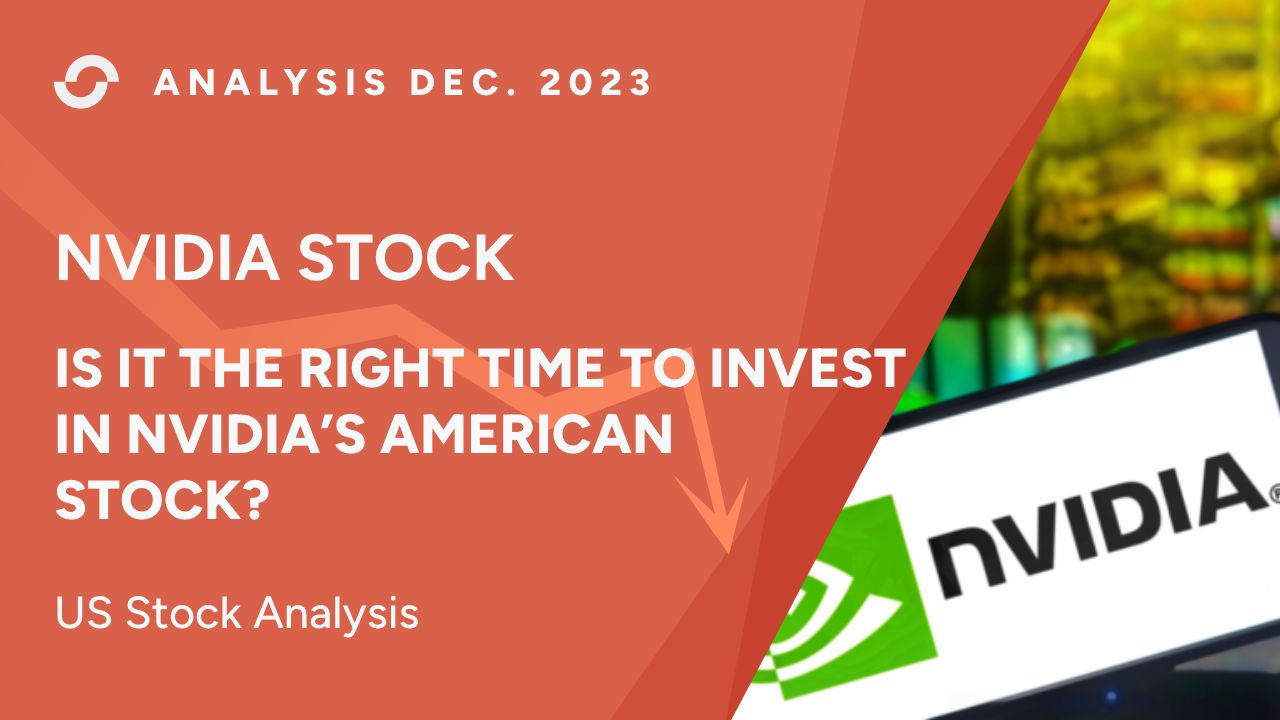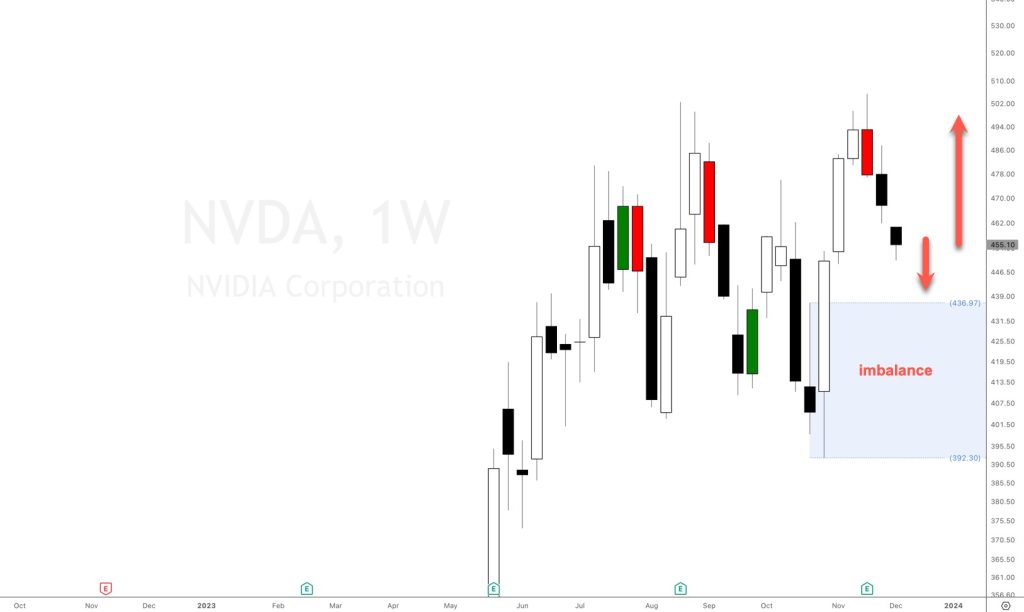04 Dec

Are you ready to dive into the world of high-flying technology stocks? If so, then Nvidia is a name that needs no introduction. With its cutting-edge graphics processing units (GPUs) fueling the gaming industry and paving the way for artificial intelligence breakthroughs, this American stock has been on a relentless upward trajectory. But as with any investment decision, timing is everything.
Nvidia’s graphics processing unit (GPU) hardware was at the centre of this year’s incredible leaps forward in artificial intelligence (AI) technologies. The company has powered popular services from OpenAI, including ChatGPT. It has paved the way for Microsoft to make big plays in the AI space, making a wide range of other high-performance applications possible.
Introduction to Nvidia and its American stock
Nvidia Corporation is an American multinational technology company specialising in designing graphics processing units (GPUs) for the gaming, professional visualization, data centre, and automotive markets. The company was founded in 1993 by Jensen Huang, Chris Malachowsky, and Curtis Priem. Since its inception, Nvidia has become a global leader in GPU manufacturing. Its product line has expanded to include other cutting-edge technologies such as artificial intelligence (AI), deep learning, and autonomous vehicles.
Nvidia’s success can be attributed to its innovative products and strong financial performance. The company’s stock is listed on the Nasdaq exchange under the NVDA ticker. It has been a top-performing stock for several years, with a current market capitalization of over $300 billion. In recent years, Nvidia’s stock price has surged due to its dominance in the gaming industry and growth in other emerging markets such as AI and self-driving cars. The stock rallied more than 200% during 2023. Is it time for a bearish correction? The stock analysis below explains what NVIDIA stock expects in the following weeks using a supply and demand technical analysis methodology.
Investing in stocks can be an intimidating process for many people. However, investing in well-established companies like Nvidia can provide significant long-term returns for investors.
Nvidia has experienced significant revenue and net income growth over the past few years. In fiscal year 2020, the company reported a record-breaking revenue of $16.68 billion, representing a 21% increase from the previous year. This growth can be attributed to increased demand for GPUs for gaming and data centre applications. 2023 was even better.
Nvidia Stock May Have Peaked
The supply and demand stock analysis below explains the reasons why Nvidia may have peaked after breaking an all-time high at $505. The stock is approaching a new weekly demand imbalance at $412. According to the Wall Street Journal, Nvidia zoomed past growth expectations in its third quarter, resulting in a tripling of revenue. So why did the stock lose 1.7% in after-hours trading following its boffo earnings announcement, and why has it plunged 10% since then? The supply and demand stock analysis below explains the stock forecast in more detail. The stock is attempting to reach the weekly demand level of $436. If the stock begins to rally and surpass this week’s high, Nvidia will likely continue to rise and break its all-time high again.

Pros of Investing in Nvidia Stock
Investing in Nvidia stock can be a lucrative decision for investors looking for long-term growth potential. With its strong position in the technology industry and continuous innovation, there are several pros to consider when evaluating whether Nvidia stock is worth the investment.
Leader in High-Growth Technology Industries
Nvidia is a well-established leader in high-growth industries such as artificial intelligence (AI), cloud computing, and gaming. Its graphics processing units (GPUs) are widely used by companies in these industries, giving Nvidia a dominant market share. As these industries continue to grow rapidly, particularly with the increasing demand for AI-powered technologies, Nvidia is well-positioned to reap the benefits and generate significant returns for investors.
Diversified Revenue Streams
One of the key strengths of Nvidia as a company is its diverse revenue streams. While its GPUs are primarily known for their use in gaming, they also have applications in other sectors, such as data centres and autonomous vehicles. This diversification of revenue sources helps mitigate risks associated with relying on one product or market, making Nvidia a relatively stable investment option compared to its competitors.
Strong Financial Performance
Nvidia has consistently delivered strong financial performance over the years, with steady revenue growth and solid profitability margins. In fiscal year 2020 alone, the company reported $10 billion in total revenue and an impressive 25% operating income margin. These numbers reflect the company’s ability to manage costs while maintaining a robust top-line growth rate effectively. 2023 was even better. The stock more than doubled its stock value.
Continued Innovation and Market Expansion
Nvidia has a track record of continuous innovation, with a strong focus on research and development. The company invests heavily in emerging technologies such as AI, virtual reality (VR), and autonomous driving, positioning itself at the forefront of these rapidly growing industries. Nvidia’s ongoing expansion into new markets also presents opportunities for future revenue growth.
Potential for Increased Demand
With the rise of AI, cloud computing, and other high-tech trends, the demand for Nvidia’s products will continue growing in the coming years. As more companies adopt these technologies, they will need powerful GPUs to support their operations, presenting significant potential for increased demand for Nvidia’s products.
One major concern with investing in Nvidia stock is its high valuation. The stock has recently broken an all-time high of $505, and it’s very expensive to buy now. A deeper bearish correction would happen in the following weeks. The stock analysis above explains the reasons behind it.
Join Set and Forget’s online trading academy or subscribe to our Trade Ideas to start making money using the forces of supply and demand.








